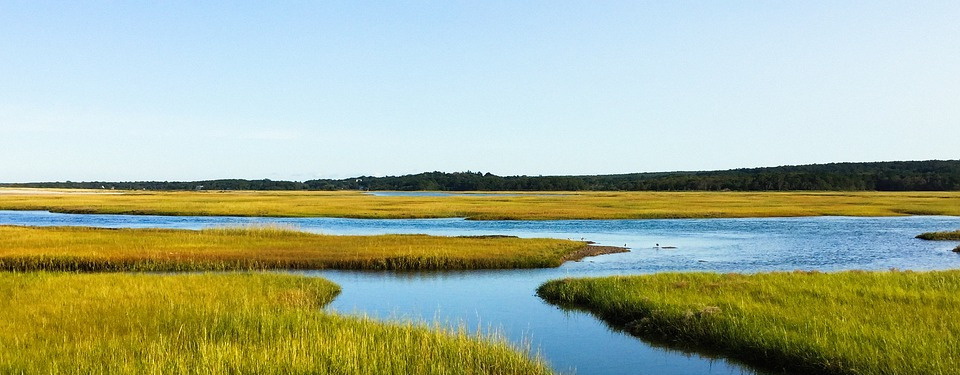Salt Plains
A hidden jewel of Zentland
The birthplace of Halorin civilization, the Salt Plains are more of a massive, gently sloped swamp valley than the vast grasslands the name conjures. The area is populated with many endemic species, possibly being one of the most biodiverse areas in all of Zentland. The land is as productive as it is wet.The Salt Plains are a vast, fifty-thousand kilometer stretch of Kava swampland. Being the first area of land to undergo extensive cataloging, the Plains are said to be known better than any other similar-scale region in the known universe. Over fifty thousand species have been dutifully named and studied by a small army of Analyst Drones, and the history of the region has been recorded for at least the past ten thousand years.
Geography
The Kava Swamp, or Salt Plains, as some others call it, has no sense of awe and beauty like the Salt Range has, and no vast open expanse like the Zentland Steppe has. Yet, it has its own beauties as well. Look no further than that ridge in the distance: Dragon's Back. The thin line of Turrim trees, jutting from the swaying forest: what elegance!The Salt Plains is beautiful in a way wholly different and wholly unique from the beauty of the surrounding regions. In the center of the valley flows the River Kalan. The Kalan River, full of black silt carried from the Salt Range, flows a beautiful blackish-green all the way down to its mouth in the Bay of Kali. The distinctive color has earned it the moniker "black serpent", due to its unique color. Nearby the river is the gorges that offer a change of scenery, compared to the swamp nearby. The gorges, often rising nearly fifty meters, have some vegetation growing on it, with the occasional Turrim tree towering like a guard soldier above a nation's border. Along the river, as well as on the outskirts of the region, lie dry forest, which is the transition between the core region of wet forest to the savanna beyond. These areas are where Brown Halora civilization likely began. However, most of the landscape is just swampland. Swamps, swamps, and more swamps. Above the water layer, which behaves like deep ocean due to the little sunlight that passes through the leaves, there is the undergrowth. Generally composed of fungi, mosses, and other organisms that require a bare minimum of light, the undergrowth sprawls along the bottom of the forest, eating away at the decomposing remains of any organic matter that falls through the forest. Above the undergrowth is the canopy, seen as a single, flame-colored wall. The canopy captures nearly 99 percent of all light entering the forest. Mainly composed of the Kava plant, and with growing Turrim interspersed, the canopy blocks almost all light from the lower layers of the forest. Above the canopy are a few emergents, massive full-grown Turrim towering over 200 meters in height. These stick out with their white bark like lighthouses in an ocean of fire.
Fauna & Flora
The Salt Plains may be the most diverse ecoregion of the many parts of Zentland. Thus, this is meant to be a catalog of many plants and animals that one may encounter when journeying through this area.Main article: Field Guide to the Kava Forest The Kava Swamp or Salt Plains has many endemic species. The main article is above (the Field Guide). Below is listed some of the major flora and fauna native to the region. The Kava plant, well adapted to the brackish swamp of the Salt Plains, dominates the flora of the Salt Plains ecoregion. The plant is bamboo-like, although it grows three times the height and reproduces by spores. It also has a tensile strength stronger than steel. The Turrim tree is another large plant that grows in the Salt Plains. Unlike the Kava, it originated in the wetter forests east of the Salt Range, and was only by chance conveyed into the western, swampy regions. The plant grows up to 250m tall, and often houses other habitats in its branches. These two plants compose up to 99 percent of the arbaceous life in the Kava Swamp. However, there are other herbaceous plants, as well as mosses and lichens. Ferns often dominate the lower levels of the forest.
Natural Resources
The Land Productiviy Quotient here is 174, higher than any value ever recorded on Earth. There are the eyeless fish, the massive trees, the animal wildlife both here and beyond! When razed, the land makes excellent farmland, which is currently being demonstrated brilliantly by the Kalian League.The swampland, being so biodiverse, also makes extremely productive farmland. On average, it is seventy-four percent more productive than the benchmark, "prime farmland". The land produces much wood, which can be harvested with special tools from the forest. The land also has much native wildlife, including several species of domesticated wildlife, which can be used to produce many things. From the earth, the region is rich in the copper and tin necessary to make bronze. It also has a large amount of coal, from forests in the region hundreds of millions of years ago. Limestone for building and clay for art has also long been harvested from around the river Kalan, and much prosperity has centered around this region in ancient times.
Alternative Name(s)
Kalan Valley, Kava Swamp, the Middle Coast (by inhabitants)
Type
Plain
Location under
Owner/Ruler
Owning Organization
Related Ethnicities
Related Myths
Remove these ads. Join the Worldbuilders Guild









Comments